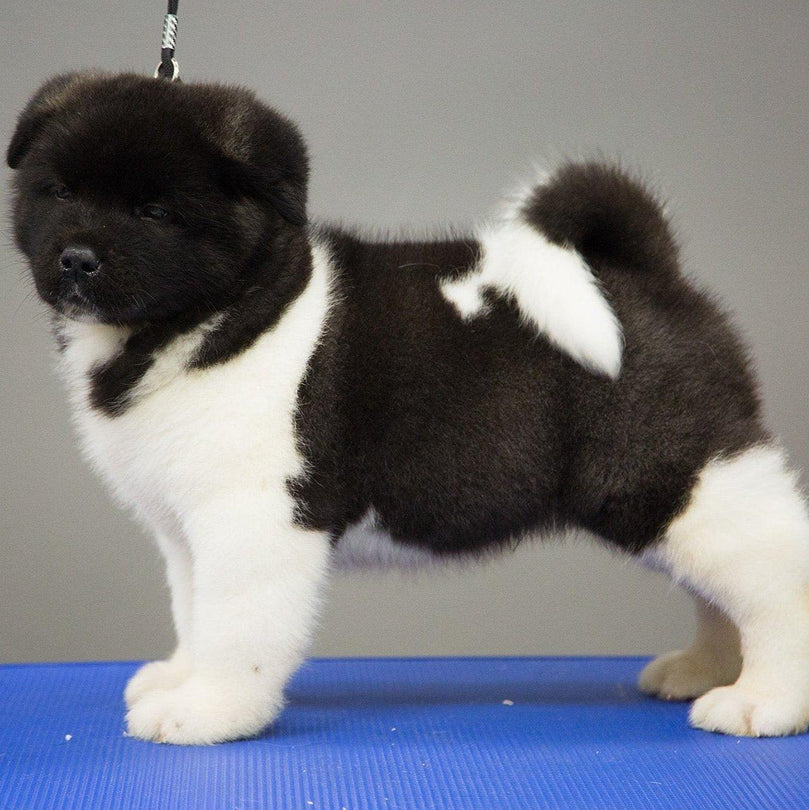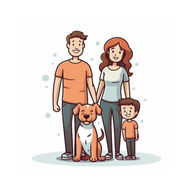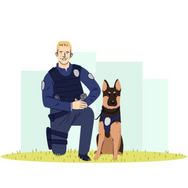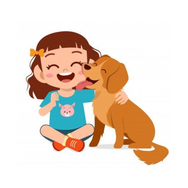Akita
Breed Traits & Characteristics
🌈 COLOR
- Black - 007 - ✅
- Fawn - 082 - ✅
- Red - 140 - ✅
- White - 199 - ✅
- Brown Brindle - 065 - ✅
- Red, Black Overlay - 422 - ✅
- Silver, Black Overlay - 424 - ✅
- Brown, Black Overlay - 421 - ✅
- Fawn, Black Overlay - 423
- Red Brindle - 148
- Silver Brindle - 303
- Black, Red Undercoat - 426
- Black, Fawn Undercoat
- Black Brindle - 279
- Fawn Brindle - 088
- Black, Brown Undercoat - 425
- Black, Silver Undercoat - 427
- White, Red Shading - 429
- Brown - 061
- Silver - 176
🐶 MARKINGS
- White Markings - ✅ - 005
- Blk & White Mask White Mkngs - ✅ -105
- Pinto, Black & White Mask - ✅ - 103
- Black Mask - - 004
- White Mask - - 015
- Pinto, Black Mask - ✅ - 079
- White Mask, White Markings - ✅ - 104
- Pinto - - 018
- White Markings - - 014
❤ HEALTH
The majority of Dogs are healthy little dogs, but there are some genetic issues that can affect the breed. You should choose your dog from a breeder who routinely does genetic health screenings on all breeding stock to ensure that the puppies they produce are as genetically sound as possible. Some of the issues that can possibly affect the Chihuahua include potential heart problems (patent ductus arteriosus, mitral valve disease), eye disease, and patellar luxation (loose kneecaps). Idiopathic epilepsy is also known to occur in the breed.
Recommended Health Tests From the National Breed Club:
Patella Evaluation
Cardiac Exam
Ophthalmologist Evaluation
🛁 GROOMING
The two coat varieties of the dog have slightly different grooming needs. The smooth-coat Chihuahua will need only occasional brushing and regular baths to look dapper, while the longhaired variety should have his coat brushed at least once a week to avoid any tangles or mats. Both varieties should have their nails trimmed regularly. Good dental care is necessary and should include brushing your dog's teeth, and the vet might also recommend treats designed as part of a tooth-care program. Check the Chihuahua's ears regularly, and remove any excess wax or debris to avoid ear infections.
🦮 EXERCISE
The dog loves to run and play and can usually get enough exercise in a very small space. Simply trotting around following their people is usually enough exercise for this happy breed. Short, slow walks will keep your dog in good weight and condition. Avoid overexerting the Chihuahua. If your dog is panting and working hard to keep up, it's time to pick him up and carry him home.
📣 TRAINING
Akitas are very intelligent and loyal but also have an independent, headstrong nature. As large and very powerful dogs, it is vital that they are trained consistently, beginning in puppyhood. They are instinctive guardians, so it's especially important that Akitas have early and extensive socialization when young. They must learn to accept a wide variety of strangers and not perceive them as a threat. Because of their independence and strong prey drive, they should never be off lead in an unsecured area. Akitas tend to be aggressive toward other dogs, particularly of the same sex, and extreme caution should be used in canine interactions.
🍗 NUTRITION
The Akita should do well on a high-quality dog food, whether commercially manufactured or home-prepared with your veterinarian's supervision and approval. Any diet should be appropriate to the dog's age (puppy, adult, or senior).Some breed experts recommend that Akitas aged 7 years and older be fed a 'light' or less calorie-dense diet as a defense against possible onset of kidney disease. Some dogs are prone to getting overweight, so watch your dog's calorie consumption and weight level. Treats can be an important aid in training, but giving too many can cause obesity. Learn about which human foods are safe for dogs, and which are not. Check with your vet if you have any concerns about your dog's weight or diet. Clean, fresh water should be available at all times. It's important to remember that some Akitas can be food-possessive, and should be given their food bowl or treats well away from other animals or children.





The Akita is a muscular, double-coated dog of ancient Japanese lineage famous for their dignity, courage, and loyalty. In their native land, they're venerated as family protectors and symbols of good health, happiness, and long life.
Akitas are burly, heavy-boned spitz-type dogs of imposing stature. Standing 24 to 28 inches at the shoulder, Akitas have a dense coat that comes in several colors, including white. The head is broad and massive, and is balanced in the rear by a full, curled-over tail. The erect ears and dark, shining eyes contribute to an expression of alertness, a hallmark of the breed. Akitas are quiet, fastidious dogs. Wary of strangers and often intolerant of other animals, Akitas will gladly share their silly, affectionate side with family and friends. They thrive on human companionship. The large, independent-thinking Akita is hardwired for protecting those they love. They must be well socialized from birth with people and other dogs.
|
|
|
|
|
Male |
Male |
Male |
|
Female |
Female |
Female |
![]() What To Expect When Caring For an Akita
What To Expect When Caring For an Akita
Owning a dog is not just a privilege; it’s a responsibility. They depend on us for, at minimum, food and shelter, and deserve much more. When you take a dog into your life, you need to understand the commitment that dog ownership entails.
Affectionate With Family
How affectionate a breed is likely to be with family members, or other people he knows well. Some breeds can be aloof with everyone but their owner, while other breeds treat everyone they know like their best friend.
Good With Young Children
A breed's level of tolerance and patience with childrens' behavior, and overall family-friendly nature. Dogs should always be supervised around young children, or children of any age who have little exposure to dogs.
Good With Other Dogs
How generally friendly a breed is towards other dogs. Dogs should always be supervised for interactions and introductions with other dogs, but some breeds are innately more likely to get along with other dogs, both at home and in public.
Shedding Level
How much fur and hair you can expect the breed to leave behind. Breeds with high shedding will need to be brushed more frequently, are more likely to trigger certain types of allergies, and are more likely to require more consistent vacuuming and lint-rolling.
Coat Grooming Frequency
How frequently a breed requires bathing, brushing, trimming, or other kinds of coat maintenance. Consider how much time, patience, and budget you have for this type of care when looking at the grooming effort needed. All breeds require regular nail trimming.
Drooling Level
How drool-prone a breed tends to be. If you're a neat freak, dogs that can leave ropes of slobber on your arm or big wet spots on your clothes may not be the right choice for you.
Coat Type
- Double
Canine coats come in many different types, depending on the breed's purpose. Each coat type comes with different grooming needs, allergen potential, and shedding level. You may also just prefer the look or feel of certain coat types over others when choosing a family pet.
Coat Length
- Medium
How long the breed's coat is expected to be. Some long-haired breeds can be trimmed short, but this will require additional upkeep to maintain.
Openness To Strangers
How welcoming a breed is likely to be towards strangers. Some breeds will be reserved or cautious around all strangers, regardless of the location, while other breeds will be happy to meet a new human whenever one is around!
Playfulness Level
How enthusiastic about play a breed is likely to be, even past the age of puppyhood. Some breeds will continue wanting to play tug-of-war or fetch well into their adult years, while others will be happy to just relax on the couch with you most of the time.
Watchdog/Protective Nature
A breed's tendency to alert you that strangers are around. These breeds are more likely to react to any potential threat, whether it's the mailman or a squirrel outside the window. These breeds are likely to warm to strangers who enter the house and are accepted by their family.
Adaptability Level
How easily a breed handles change. This can include changes in living conditions, noise, weather, daily schedule, and other variations in day-to-day life.
Trainability Level
How easy it will be to train your dog, and how willing your dog will be to learn new things. Some breeds just want to make their owner proud, while others prefer to do what they want, when they want to, wherever they want!
Energy Level
The amount of exercise and mental stimulation a breed needs. High energy breeds are ready to go and eager for their next adventure. They'll spend their time running, jumping, and playing throughout the day. Low energy breeds are like couch potatoes - they're happy to simply lay around and snooze.
Barking Level
How often this breed vocalizes, whether it's with barks or howls. While some breeds will bark at every passer-by or bird in the window, others will only bark in particular situations. Some barkless breeds can still be vocal, using other sounds to express themselves.
Mental Stimulation Needs
How much mental stimulation a breed needs to stay happy and healthy. Purpose-bred dogs can have jobs that require decision-making, problem-solving, concentration, or other qualities, and without the brain exercise they need, they'll create their own projects to keep their minds busy -- and they probably won't be the kind of projects you'd like.



















